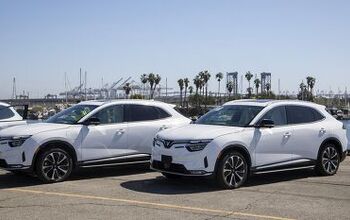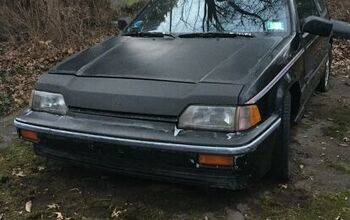Oshawa Camaro Production Ceases November 20, Reduced To Three Shifts

First announced December 19, 2012, GM Canada’s Oshawa Assembly facility will officially cease production of the Camaro on November 20, 2015 in conjunction with the car’s next generation, GM announced today. Camaro production remained at the Oshawa plant a year longer than initially promised in 2012.
Assembly shifts will be reduced from four to three between the “Flex” and “Consolidated” lines. Currently, the “Flex” line is on three shifts while the smaller line is on one shift. GM Canada will “begin a voluntary retirement canvass” to reduce worker head count before implementing any layoffs. GM Canada President, Stephen K. Carlisle, stated “60 percent of our hourly workforce are nearing retirement” age and the company will offer incentives to eligible employees looking to retire early.
Chevrolet Impala, Buick Regal and Cadillac XTS production will continue on the “Flex” line for now. Regal production is scheduled to move to Germany by 2017 while the XTS will be discontinued at the end of its lifecycle in 2019. Both the XTS and Impala are also produced in Michigan. The “Consolidated” line currently builds the Impala Limited – a previous-generation W-body sedan – and the Chevrolet Equinox, the latter which is also produced in Ingersoll, Ontario.
GM Canada and Unifor are working together to “examine a range of longer-term opportunities and competitiveness enhancements for Oshawa Assembly,” stated the release today. The future of Oshawa will be announced after Unifor national bargaining next year.
On the same day, GM also announced $5.4b in investments aimed at the company’s Pontiac, Lansing, and Warren, Michigan facilities.
The announcement comes after GM Canada committed $800m to Ingersoll and another 100 jobs toward expanding connected car and green technology development at GM Canada’s Oshawa Engineering Centre.

More by Mark Stevenson
Latest Car Reviews
Read moreLatest Product Reviews
Read moreRecent Comments
- Lou_BC Well, I'd be impressed if this was in a ZR2. LOL
- Lou_BC This is my shocked face 😲 Hope formatting doesn't fook this up LOL
- Lou_BC Junior? Would that be a Beta Romeo?
- Lou_BC Gotta fix that formatting problem. What a pile of bullsh!t. Are longer posts costing TTAC money? FOOK
- Lou_BC 1.Honda: 6,334,825 vehicles potentially affected2.Ford: 6,152,6143.Kia America: 3,110,4474.Chrysler: 2,732,3985.General Motors: 2,021,0336.Nissan North America: 1,804,4437.Mercedes-Benz USA: 478,1738.Volkswagen Group of America: 453,7639.BMW of North America: 340,24910.Daimler Trucks North America: 261,959


































Comments
Join the conversation
No one is surprised. There's little reason to expand in Ontario, and ever more reasons to leave.
A number of factors negatively impacting D3 manufacturing in Ontario. The first was Bob White's enormous ego. In the mid to late 80's when he removed the Canadian autoworkers from the UAW and formed the CAW he never considered the long term consequences. Once NAFTA replaced the US-Canada Auto Pact, American and Canadian autoworkers were competing for jobs. Therefore the UAW was petitioning US politicians to move production to their facilities. Killing Canadian jobs didn't matter to American politicians. Just like British politicians could use colonial troops in suicidal situations with little repercussion during the World Wars. The Ontario government compounded the problem with its ludicrous and onerous electricity programs. There is no way that the cost of electricity should be so high in Ontario. Their refusal to invest in infrastructure also means that the highways between Ontario and the U.S. are now congested adding to fuel costs and transport time. Finally once the D3 were able to 'offload' much of the cost for medical care/coverage from their retirees and new hires, their costs were reduced dramatically. Not having to provide medical coverage in Ontario, due to universal healthcare, was a significant cost savings for employers in Ontario. So once again politics and cost trump quality and loyalty.